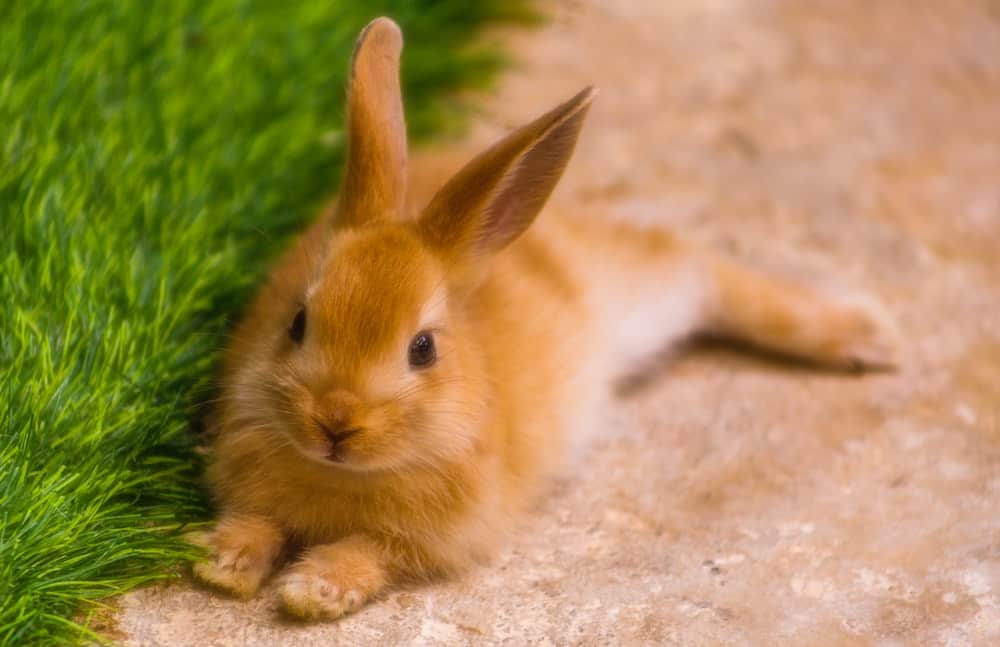
Just like cats and dogs, rabbitsUnless explicitly mentioned, we are referring to domesticated rabbit breeds, not wild rabbits, who may have unique needs not covered by this resource. have nails on their feet. And as in other residents, this consistently growing material needs to be maintained for their health. A rabbitUnless explicitly mentioned, we are referring to domesticated rabbit breeds, not wild rabbits, who may have unique needs not covered by this resource. in a sanctuary environment is unlikely to naturally wear down their nails, so you should plan to assess their nail length and trim as needed when you conduct a rabbit health examination. Rabbits with very overgrown nails pose a risk in terms of having sharper nails that could cause injury to themselves or others, and can also cause injury and infection should an overgrown nail get caught on something in the course of a day and break off.
Signs You Should Step In
You should schedule a trimming before a rabbit’s toenails grow to the length where they begin to grow far past their toe tips, become dangerously sharp, begin to curl (which can be more of a common occurrence in Rex rabbits), or become ingrown (sometimes in circumstances where they don’t have enough hard surfaces to scratch against, sometimes by virtue of their genetics).
If at all possible, have a veterinarian or expert give you hands-on training for this procedure! There are nuances in trimming technique that can not be conveyed through words alone.
Pre-Trimming Suggestions
Carefully corral the rabbit and bring them to a well-lit area where you can see their nails as clearly as possible. If they’re too stressed to be contained, you must give them time to calm down before trying again! A stressed out rabbit can be extremely dangerous to the individual. This process may be aided with a second set of helping hands to help keep the rabbit more calm if you or the rabbit are nervous! Particular attention should be given to ensuring that their back and hindquarters are supported to ensure that they do not cause grave injuries by struggling. This can be achieved by keeping the rabbit firmly, but not uncomfortably restrained and on top of a clean towel for comfort and traction. Some individuals will be much more prone to squirming and stress than others.
Consider setting out all of your supplies in an easily-accessible area so you can get the work done quickly
How To Trim A Rabbit’s Nails
Trimming a rabbit’s nails is very similar to trimming a cat’s or dog’s nails. Like cats and dogs, rabbits also have a sensitive area made of soft tissue in the center of their claws known as the quick. Cutting the quick by accident can be painful, bloody, and understandably stressful to the individual, so it’s important to be very mindful about how much you trim. Some rabbits’ nails might be darker, making it a bit more of a challenge to identify their quick. A bright light or flashlight may be utilized to help spot the quick before trimming. For rabbits with very long hair around their feet, you can carefully wet a bit of their hair down with some water to help make the nail easier to see. A typical rabbit will have 4 nails on each of their front feet in addition to a dewclaw nail, and lack a dewclaw on their back feet.
If by yourself, use one hand to hold their foot and the other to do the trimming. Secure their foot gently but firmly with your thumb and forefinger to hold it still. They might be touchy- this isn’t out of pain but because of distaste towards their feet being touched.
Using a cleaned pair of petAn animal who spends regular time with humans in their home and life for companionship or human pleasure. Typically a small subset of animal species are considered to be pets by the general public. nail clippers, trim a very small amount of the rabbit’s nails at a time to prevent accidental quick cutting. Each time you snip, take a look at the remaining nail. If it changes hue even slightly, or if the rabbit seems to pull back as you start to apply pressure to make a cut, you’re likely very close to the quick and should stop trimming. If the nail is still too long and you’re near the quick (as it grows and recedes depending on overall nail length), you can wait a few weeks for the quick to retreat and then trim a little more, repeating the process of trimming and waiting until their nails reach a safe length.
In some instances, after you’ve trimmed the nails you may need to file down the remaining rough edges with an emery board or nail file to protect the rabbit from injuring themself when they scratch. Make sure to clean nail clippers if they become dirty or come into contact with blood from hitting the quick before using them to trim another individual’s nails.
If You Draw Blood
If you accidentally draw blood, apply an astringent like a styptic pencil, styptic powder (such as Quick Stop), alum, or witch hazel. You can also dip the wound in cornstarch or flour to encourage natural clotting. Lacking these tools, you can also use a piece of toilet paper or cotton ball as if you’d nicked yourself shaving! If the bleeding doesn’t stop, you can use the tip of your finger to apply pressure for up to a minute and repeating until any bleeding ends.
SOURCES:
How To Trim Your Rabbit’s Nails | House Rabbit Society








